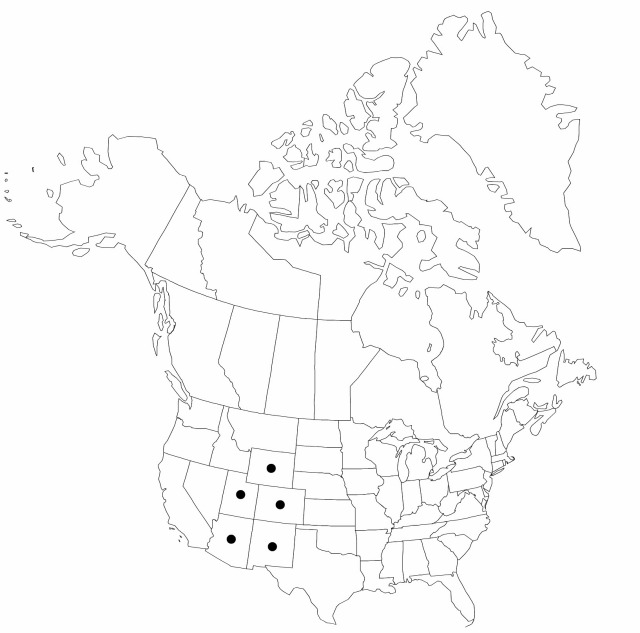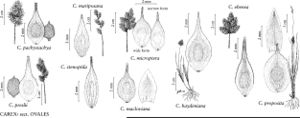Carex ebenea
Bull. Torrey Bot. Club 28: 266. 1901.
Plants densely cespitose. Culms 18–50 cm. Leaves: sheath adaxially white-hyaline, summits U-shaped to rounded, occasionally prolonged to 4 mm beyond collar; distal ligules 0.5–1.5(–2) mm; blades 3–4(–6) per fertile culm, 11–26 cm × 2.8–4 mm. Inflorescences dense, dark brown, 1.5–3 cm × 14–20 mm; proximal internode 1.5–3 mm; 2d internode 1–3.5 mm; proximal bracts scalelike, usually bristlelike, shorter than inflorescences. Spikes (4–)6–12, aggregated, individually indistinct, ovoid, 9–15 × 4.5–6.5 mm, base and apex acute to rounded. Pistillate scales dark brown, red-brown, or red-gold, sometimes with green to gold midstripe, ovate, 3.6–4.7 mm, shorter than and narrower or as wide as perigynia, margin gold-hyaline, to 0.3 mm wide, apex acuminate or acute. Perigynia appressed to ascending, green, gold, or brown, conspicuously usually 7–9-veined abaxially, conspicuously 0–5-veined adaxially, veins shorter than achene, lanceolate to ovate, plano-convex, to 5.3–7.1 × 1.1–1.5 mm, 0.4–0.5 mm thick, margin flat, including wing 0.15–0.3 mm wide, ciliate-serrulate at least on distal body; beak dark brown, sometimes gold-hyaline at tip, cylindric, unwinged, ± entire for 0.9–1.5 mm, dorsal suture inconspicuous or with conspicuous white margin, distance from beak tip to achene 2.9–4 mm. Achenes ovate to obovate, 1.5–1.9 × 0.8–1.1 mm, 0.4–0.5 mm thick. 2n = 84.
Phenology: Fruiting summer.
Habitat: Meadows
Elevation: 2700–3700 m
Distribution

Ariz., Colo., N.Mex., Utah, Wyo.
Discussion
Selected References
None.
